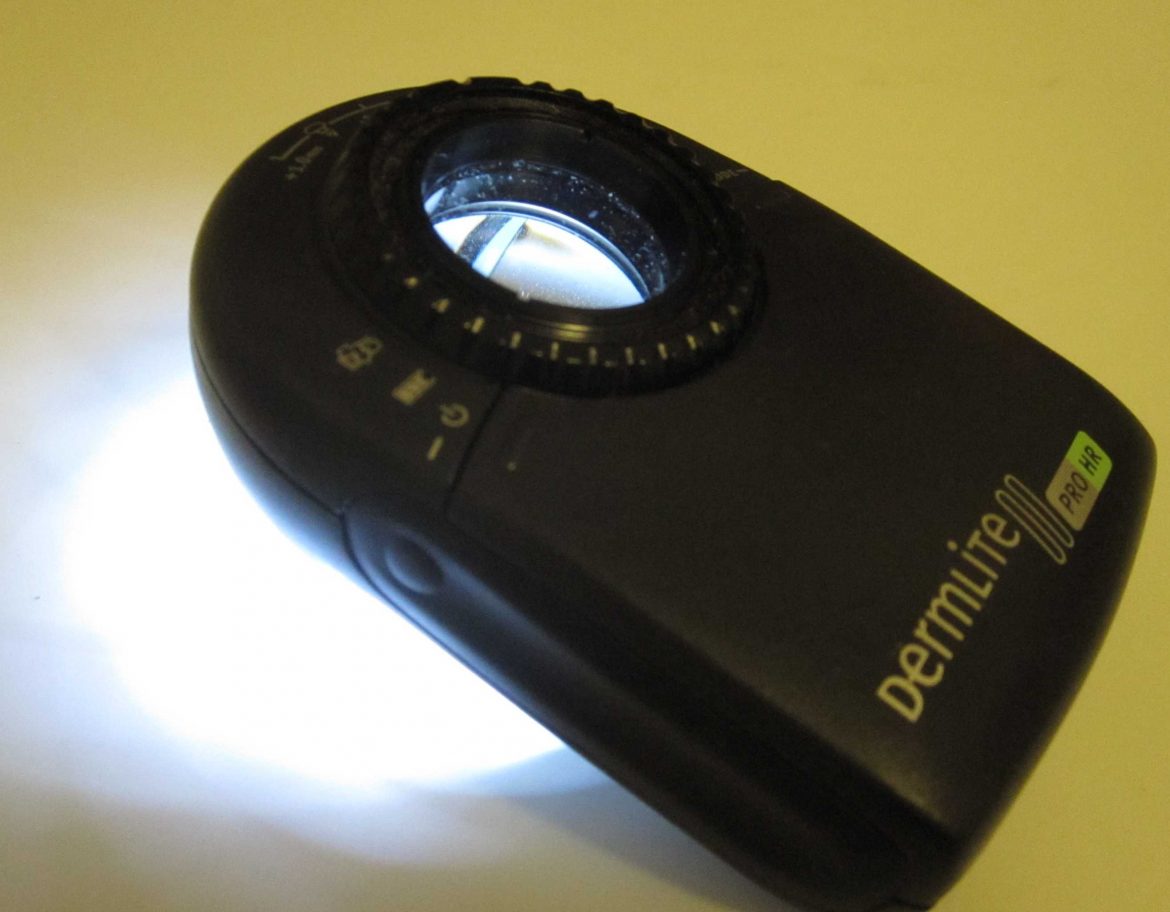Melanoma is one of the most aggressive forms of skin cancer. If detected early, it has a 100% survival rate, whereas if diagnosed at a more advanced stage, it can be fatal.
Although melanomas are more likely to appear on normal skin (without a previous mole), most of them appear on “normal” moles on the skin. That is why it is important to monitor any changes in our moles using simple guidelines (ABCDE rules) for the early detection of melanoma.
WHAT IS DERMOSCOPY?
Dermatoscopy is a technique developed by dermatologists for monitoring moles. It can be performed using a handheld dermatoscope or a digital dermatoscopy device.
Manual dermoscopy:
A manual dermatoscope is simply a type of “magnifying glass” that allows moles to be observed at higher magnification. When observing moles with the dermatoscope, patterns are assessed that provide guidance on the benignity, malignancy, or “uncertainty” of that mole. Based on this, and on how “disturbing” the mole is, the dermatologist may decide to remove it.
Digital dermatoscopy:
It allows all of a person’s moles to be photographed and monitored individually over time. The technique is also often referred to by the trade name of the most commonly used devices: Fotofinder® or Molemax®. In this way, if any “suspicious” changes are observed in any of them that indicate possible malignancy, they will be removed at an early stage, preventing them from “deepening” and thus worsening their prognosis. This is the most effective technique available today for mole monitoring.



